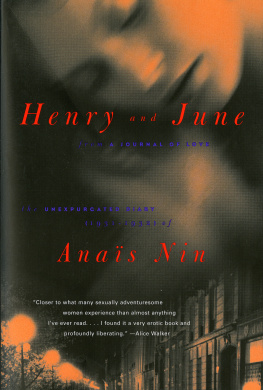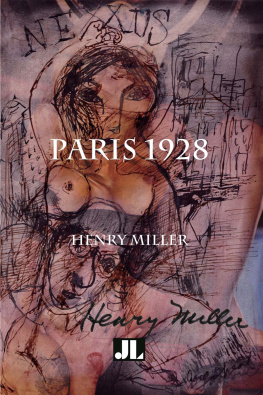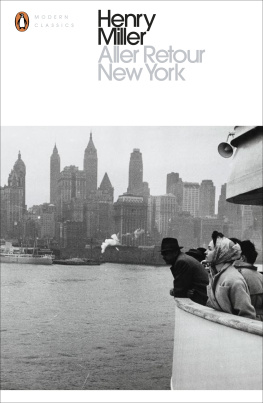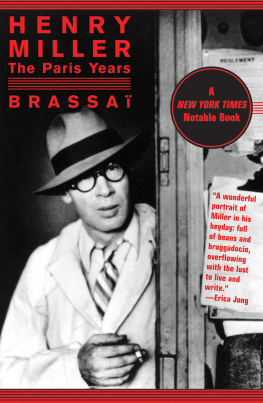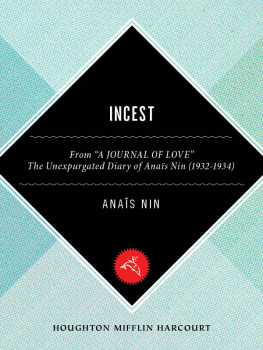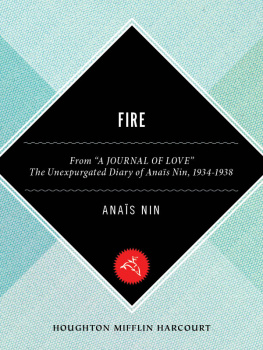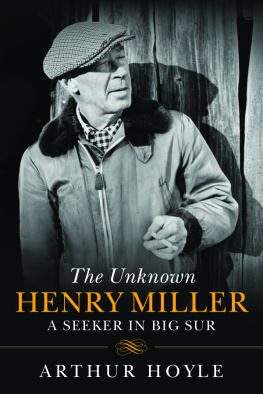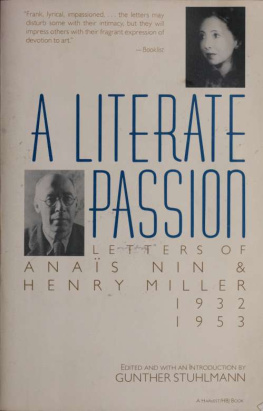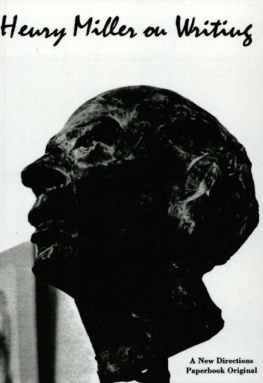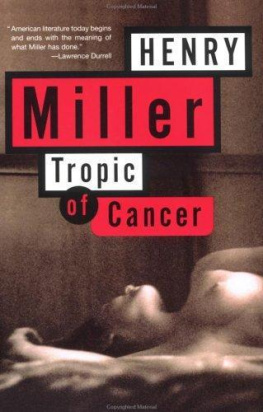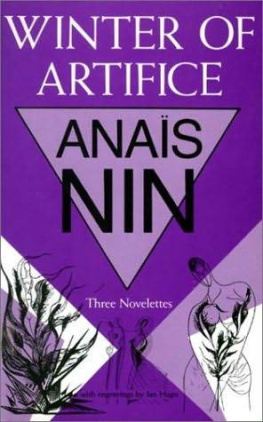PENGUIN BOOKS
Henry and June
Partly of Spanish origin, Anas Nin was also of Cuban, French and Danish descent. She was born in Paris and spent her childhood in various parts of Europe. Her father left the family for another woman, which shocked Anas profoundly and was the reason for her mother to take her and her two brothers to live in the United States. Later Anas Nin moved to Paris with her husband, and they lived in France from 1924 to 1939, when Americans left on account of the war. She was analysed in the 1930s by Ren Allendy and subsequently by Otto Rank, with whom she also studied briefly in the summer of 1934. She became acquainted with many well-known writers and artists, and wrote a series of novels and stories.
Her first book a defence of D. H. Lawrence was published in the 1930s. Her prose poem, House of Incest (1936) was followed by the collection of three novellas, Winter of Artifice (1939). The quality and originality of her work were evident at an early stage but, as is often the case with avant-garde writers, it took time for her to achieve wide recognition. The international publication of her Journals won her new admirers in many parts of the world, particularly among young people and students. Her novels, Ladders to Fire, Children of the Albatross, The Four-Chambered Heart, A Spy in the House of Love and Seduction of the Minotaur were first published in the United States between the 1940s and the 1960s, and eventually gathered in Cities of the Interior. She also wrote a collection of short stories, Under a Glass Bell. In the 1940s she began to write erotica for an anonymous client, and these pieces are collected in Delta of Venus and Little Birds (both published posthumously). Penguin have also published A Woman Speaks, a collection of lectures and interviews; Journal of a Wife, the third volume of The Early Diary of Anas Nin, 19231927; In Favour of the Sensitive Man and Other Essays; and The Early Diary 19271931, which is the fourth volume of her diary. Henry and June, a chronicle of her passionate involvement with Henry Miller and his wife June Mansfield, and Incest are volumes of the unexpurgated diary of Anas Nin, distinguishable from her previously published volumes by the references to both her husband and her love life. Her books have been translated into twenty-six languages around the world.
During her later years Anas Nin lectured frequently at universities throughout the USA. In 1973 she received an honorary doctorate from Philadelphia College of Art and in 1974 was elected to the National Institute of Arts and Letters. She died in Los Angeles in 1977.
HENRY AND JUNE
FROM THE UNEXPURGATED DIARY OF ANAS NIN

PENGUIN BOOKS
PENGUIN BOOKS
Published by the Penguin Group
Penguin Books Ltd, 80 Strand, London WC2R 0RL, England
Penguin Putnam Inc., 375 Hudson Street, New York, New York 10014, USA
Penguin Books Australia Ltd, Ringwood, Victoria, Australia
Penguin Books Canada Ltd, 10 Alcorn Avenue, Toronto, Ontario, Canada M4V 3B2
Penguin Books India (P) Ltd, 11 Community Centre, Panchsheel Park, New Delhi 110 017, India
Penguin Books (NZ) Ltd, Cnr Rosedale and Airborne Roads, Albany, Auckland, New Zealand
Penguin Books (South Africa) (Pty) Ltd, 24 Sturdee Avenue, Rosebank 2196, South Africa
Penguin Books Ltd, Registered Offices: 80 Strand, London WC2R 0RL, England
www.penguin.com
First published in the USA by Harcourt Brace Jovanovich 1986
First published in Great Britain by W. H. Allen 1987
Published in Penguin Books 1990
Reprinted in Penguin Classics 2001
8
Copyright Rupert Pole as Trustee under the Last Will and Testament of Anas Nin, 1986
All rights reserved
Published by arrangement with Gunther Stuhlmann, Authors Representative
Except in the United States of America, this book is sold subject
to the condition that it shall not, by way of trade or otherwise, be lent,
re-sold, hired out, or otherwise circulated without the publishers
prior consent in any form of binding or cover other than that in
which it is published and without a similar condition including this
condition being imposed on the subsequent purchaser
EISBN: 9780141904511
EDITORS PREFACE
Anas Nin knew very early that she would be a writer. At age seven she signed her stories Anas Nin, Member of the French Academy. In her schoolgirl French she wrote numerous stories and plays that seemed to spring spontaneously from a most dramatic imagination, heightened by Anass need to control her two younger brothers. This, she discovered, could only be accomplished by telling them endless stories and casting them in her theatrical productions.
In 1914, when she was eleven, she began the now-famous diary as a series of letters to her father, who had abandoned the family. She treated the diary as a confidante and wrote in it almost daily throughout her lifein French, until 1920; after that, in English. (The handwritten journals, comprising some 35,000 pages, are now in the Special Collections Department of U.C.L.A.) The discipline of daily writing without readers or censorship gave Anas, over the years, an ability to describe her emotions of the moment, an ability not fully realized until the period of Henry and June, which began in 1931.
She wrote continuously, both fiction and her diary, for another forty-five years. Anas the diarist and Anas the novelist carried on an uneasy relationship. She wrote in the diary in 1933: My book [a novel] and my journal step on each others feet constantly. I can neither divorce nor reconcile them. I play the traitor to both. I am more loyal to my journal, however. I will put pages of my journal into the book but never pages of the book into the journal, showing a human faithfulness to the human authenticity of the journal.
In the late twenties John Erskine told Anas that her diary contained her best writing, and she began to work on an idea that would allow her to publish many pages of it. At this time it could have been published complete; she had nothing to conceal. Thereafter she would devise a number of plans for publication: transforming the diary into fiction, doing it in diary form with fictitious names, or doing it in diary form with both fictitious and real names. But from 1932 on, when she began with Henry Miller what became a lifelong search for the perfect love, she realized she could never publish the diary as she wrote it without hurting her husband, Hugh Cuiler, as well as others. She turned, instead, to publishing fiction.
By the mid-fifties, after her stories and novels had failed to bring her more than underground recognition, she thought of another, more workable method of publishing the diary without risk of injury to others. She decided to use real names and to simply edit out her personal life, her husband, and her lovers. After reading Henry and June, anyone familiar with the first published diary (1966) will realize what an ingenious accomplishment this was. Anas the diarist would probably have begun that initial diary at its actual beginning in 1914. But Anas the novelist, always dominant, chose to begin in 1931, her most interesting and dramatic period, when she had just met Henry and June Miller.
The present volume reexamines that period from a new perspective, releasing material deleted from the original diary and never before published. It was Anass wish to have the full story told.
The text is taken from journals thirty-two through thirty-six, titled June, The Possessed, Henry, Apotheosis and Downfall, and Journal of a Possessed, written from October 1931 to October 1932. It has been edited to focus on the story of Anas, Henry, and June. Material that appeared in
Next page

